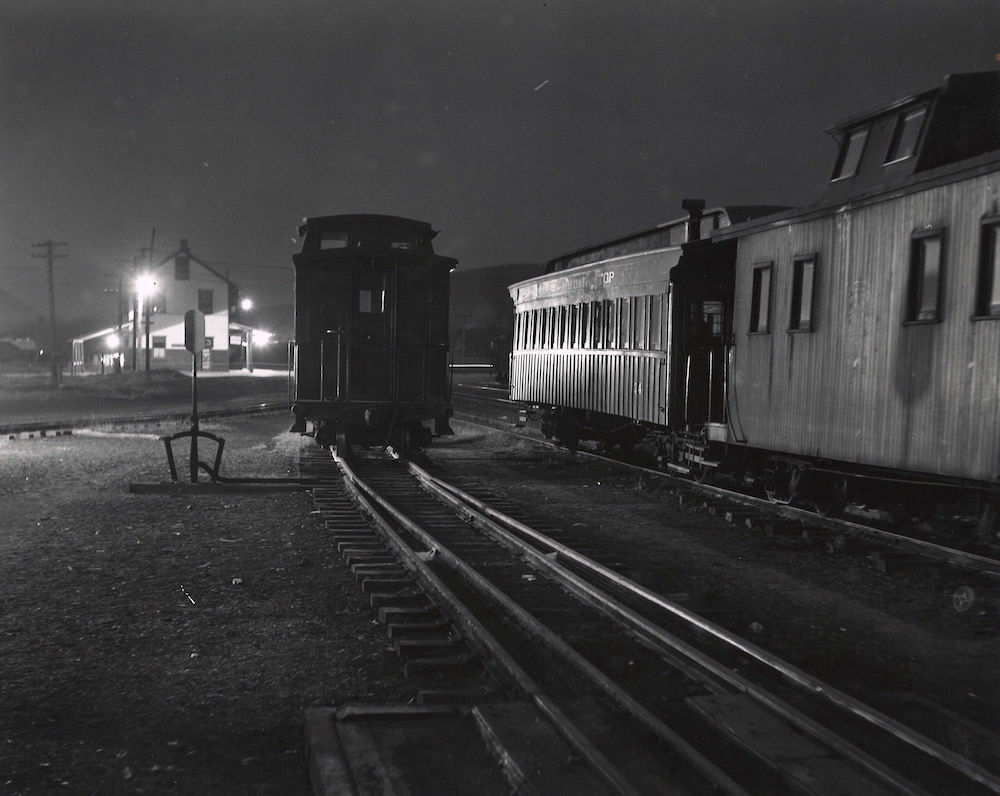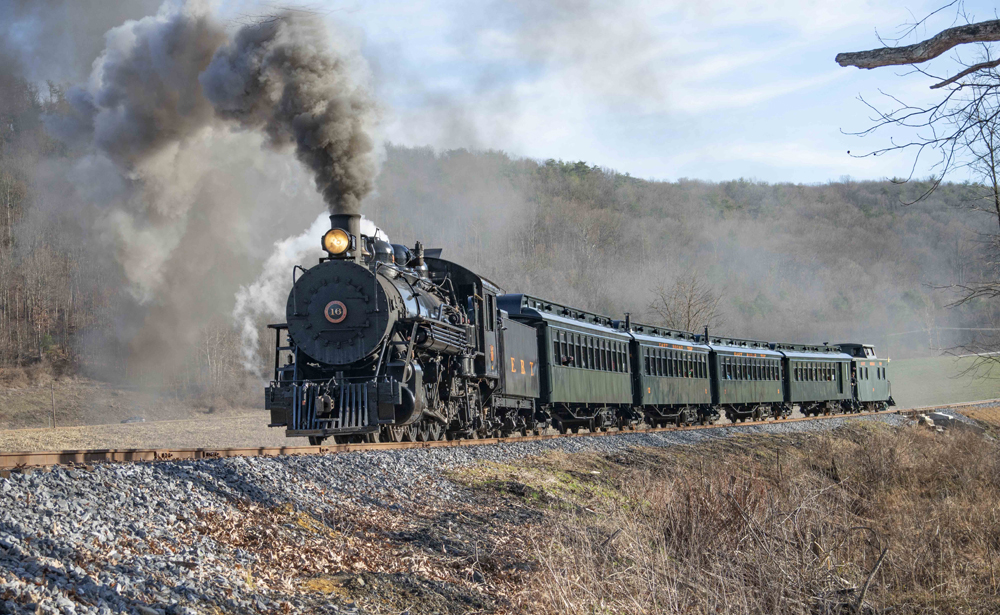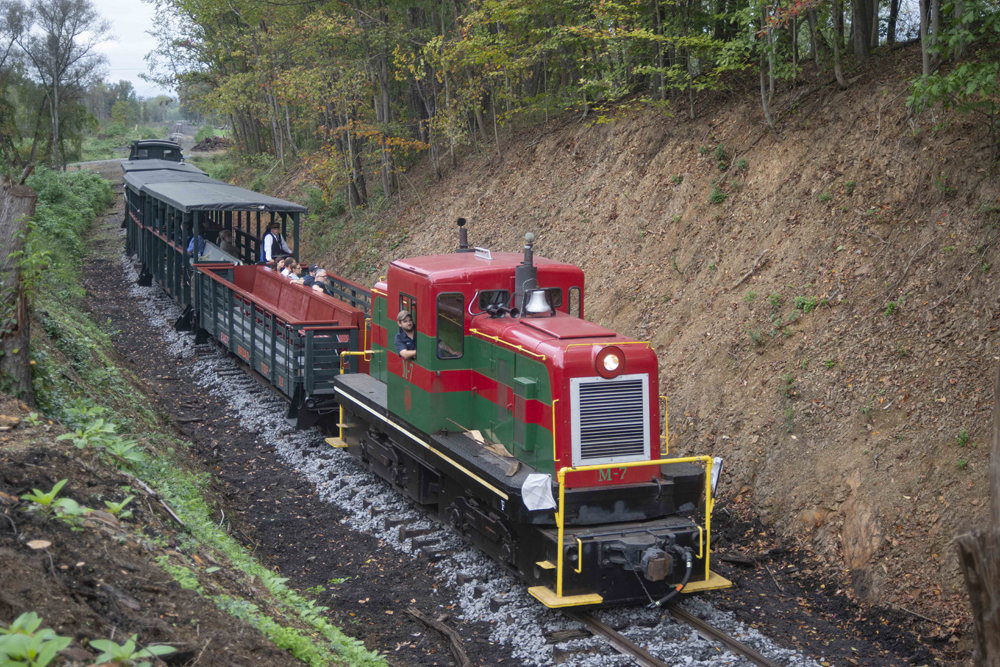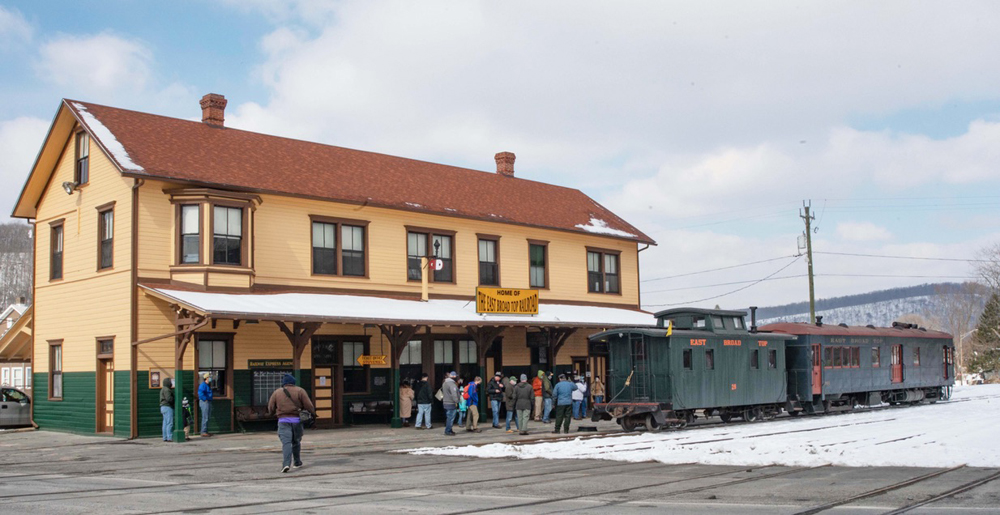
East Broad Top Railroad passenger cars have been vital to the narrow gauge railroad’s 150-year history. Today’s fleet is a mixture of old and new, waiting for you to climb aboard the next time you visit this National Historic Landmark in Rockhill, Pennsylvania.
Coach passenger cars
Since the beginning of passenger service on August 30, 1873, the East Broad Top’s coaches were primarily used to carry coal miners. A seasonal spike in capacity was common during the famous picnic trains in the Summer. Today, two original coaches from the common carrier era still reside on the railroad along with three 21st-century-built newcomers.
No. 8 was built in 1882 by the Laconia Car Company. This wooden-bodied coach first served the Boston, Revere Beach & Lynn Railroad in Massachusetts before being purchased by the EBT in 1916. No. 8 was a regular on excursion trains during the tourist era beginning in 1960 and is currently undergoing restoration to be returned to service for special occasions.
No. 20 was originally built as a coach by Billmeyer & Small in 1882 before being converted into a business car by the Bradford, Bordell & Kinzua Railroad of Pennsylvania. It is well known for the claim of once serving as a private car for U.S. President Grover Cleveland on the BB&K. No. 20 was acquired by the East Broad Top in 1907 and has since been the star of the railroad’s passenger fleet as the Orbisonia.
Nos. 21, 22 and 23 are the railroad’s first new passenger equipment in more than 120 years. They were built by the Hamilton Manufacturing Corporation of Bellingham, Washington, with No. 21 being the first to be delivered in July 2022. All three cars, along with newly-built combine No. 17, debuted together with restored 2-8-2 Mikado-type steam locomotive No. 16 during the 2023 Winter Spectacular. These coaches will serve as the primary passenger fleet, each with their 52-seat capacity and modern Timken roller bearings.

Combination passenger cars
Part coach and part baggage, the combination cars on the East Broad Top were primarily used to carry coal miners in addition to the daily mail. Three of the original combines from the common carrier era still reside at the railroad with a fourth freshly built.
No. 14 is believed to have been built in the 1880s by Gilbert Bush & Company for the Boston, Revere Beach & Lynn Railroad. It was purchased by the EBT in 1916, initially as a wooden-bodied smoker coach before being converted into a combine. No. 14 was a regular during the tourist era’s excursion trains and is being restored for limited operations by the Friends of the East Broad Top.
No. 15 was built in 1882 by the Laconia Car Company. This wooden-bodied car first served the Boston, Revere Beach & Lynn before being purchased by the East Broad Top in 1916. Much like combine No. 14, 15 saw regular use during the tourist era. It’s currently undergoing restoration work by the East Broad Top Foundation Incorporated with plans for a return to service during selected events.
No. 17 is one of the railroad’s first new passenger cars in more than 120 years. Hamilton Manufacturing constructed the combine, and it arrived at the East Broad Top in February 2023. The car debuted behind steam locomotive No. 16 and three Hamilton-built coaches during the annual Winter Spectacular. With a 40-seat capacity, modern Timken roller bearings and an electric wheelchair lift, No. 17 will be part of the primary passenger fleet on the EBT going forward.
No. 18 has a cloudy origin. It’s believed to have been constructed by the East Broad Top in 1876, making it the oldest surviving passenger car on the railroad. This combine was sold in 1954 by the EBT, relocating to Michigan and then Colorado before being purchased by the Friends in 2002. No. 18 is currently stored in the railroad’s Rockhill Furnace carshop awaiting restoration.
Baggage-Express cars
No. 29 was part of a batch of passenger equipment purchased in 1916 from the recently standard-gauged Au Sable & Northwestern Railroad of Michigan. The car was used in work-train service during the East Broad Top’s common carrier years. It’s currently stored in the railroad’s carshop awaiting restoration.
Flatcars
Nos. 107, 111, 117, 119 and 123 were part of 20 steel flatcars, which were built by the East Broad Top between 1923 and 1925 for the timber business. They were later converted to open-air passenger cars during the tourist era. No. 119 became the first to be put into excursion service for the opening season in 1960, followed by the others during the 1990s.

Boxcars
Most of the steel boxcars survive at the East Broad Top. They were built between 1913 and 1920 by the railroad to handle the increase in traffic for clay and water. Two were converted into open-air cars during the tourist era.
No. 168 joined the passenger fleet in 2008 after extensive work by the Friends. This 1920-built car includes a wheelchair lift, making it handicap accessible.
No. 175 was part of the 1916 order of steel boxcars. Just like flatcar No. 119, this car was converted for the opening season of passenger excursions in 1960.
Cabooses
Nos. 27 and 28 were the last cabooses to be built by the East Broad Top in 1920, constructed with wooden bodies on steel underframes. They’re the only cabooses on the railroad and are still in active service.

Read more about East Broad Top Railroad passenger cars in Trains‘ special issue, East Broad Top.









